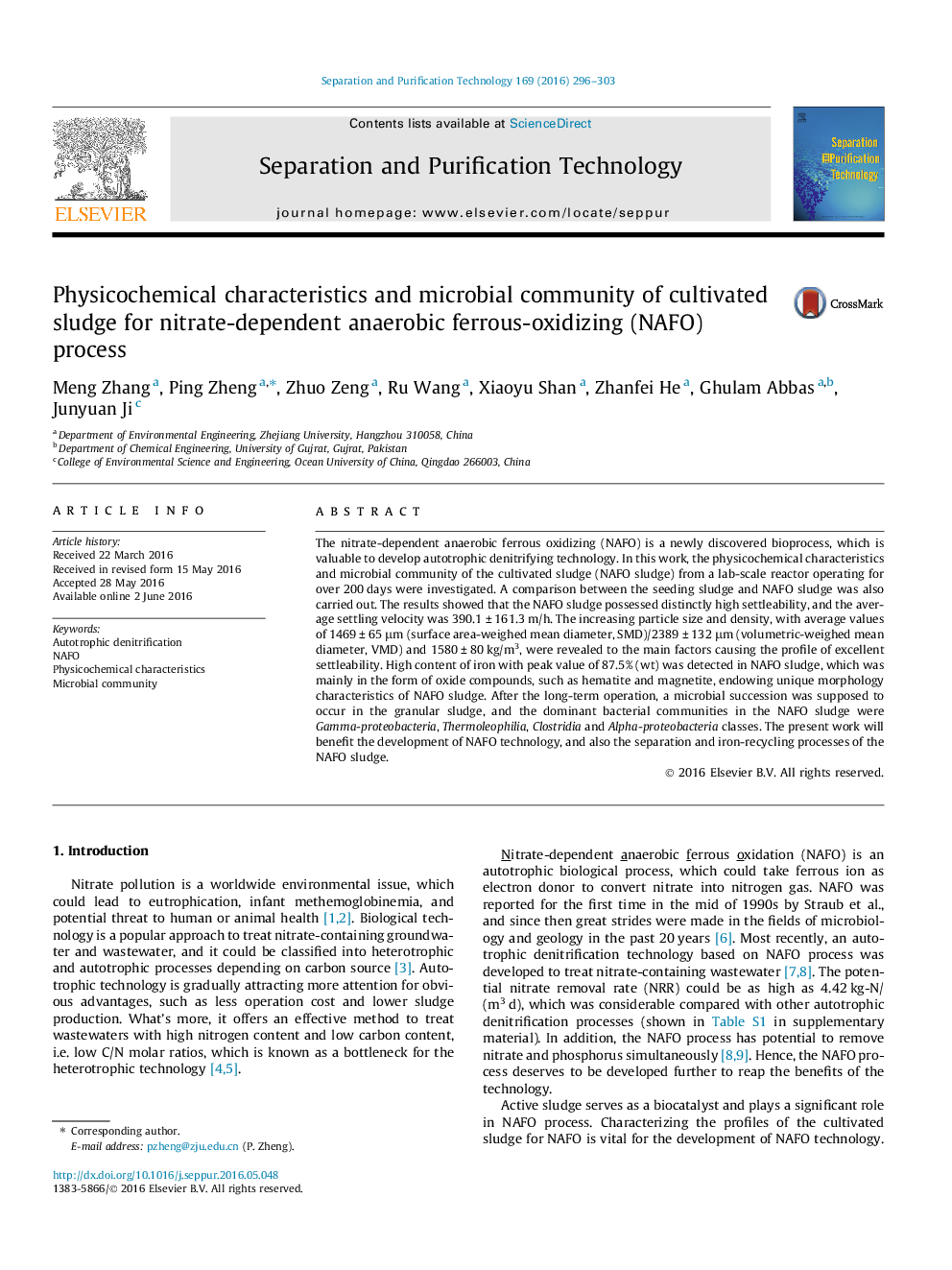| Article ID | Journal | Published Year | Pages | File Type |
|---|---|---|---|---|
| 639904 | Separation and Purification Technology | 2016 | 8 Pages |
•NAFO sludge possessed high settleability with settling velocity of 390.1 ± 161.3 m/h.•The increasing particle size and density contribute to the excellent settleability.•NAFO sludge had unique morphology profiles for high content of iron oxide compounds.•Microbial succession was supposed to occur during the NAFO cultivation process.
The nitrate-dependent anaerobic ferrous oxidizing (NAFO) is a newly discovered bioprocess, which is valuable to develop autotrophic denitrifying technology. In this work, the physicochemical characteristics and microbial community of the cultivated sludge (NAFO sludge) from a lab-scale reactor operating for over 200 days were investigated. A comparison between the seeding sludge and NAFO sludge was also carried out. The results showed that the NAFO sludge possessed distinctly high settleability, and the average settling velocity was 390.1 ± 161.3 m/h. The increasing particle size and density, with average values of 1469 ± 65 μm (surface area-weighed mean diameter, SMD)/2389 ± 132 μm (volumetric-weighed mean diameter, VMD) and 1580 ± 80 kg/m3, were revealed to the main factors causing the profile of excellent settleability. High content of iron with peak value of 87.5% (wt) was detected in NAFO sludge, which was mainly in the form of oxide compounds, such as hematite and magnetite, endowing unique morphology characteristics of NAFO sludge. After the long-term operation, a microbial succession was supposed to occur in the granular sludge, and the dominant bacterial communities in the NAFO sludge were Gamma-proteobacteria, Thermoleophilia, Clostridia and Alpha-proteobacteria classes. The present work will benefit the development of NAFO technology, and also the separation and iron-recycling processes of the NAFO sludge.
Graphical abstractFigure optionsDownload full-size imageDownload as PowerPoint slide
